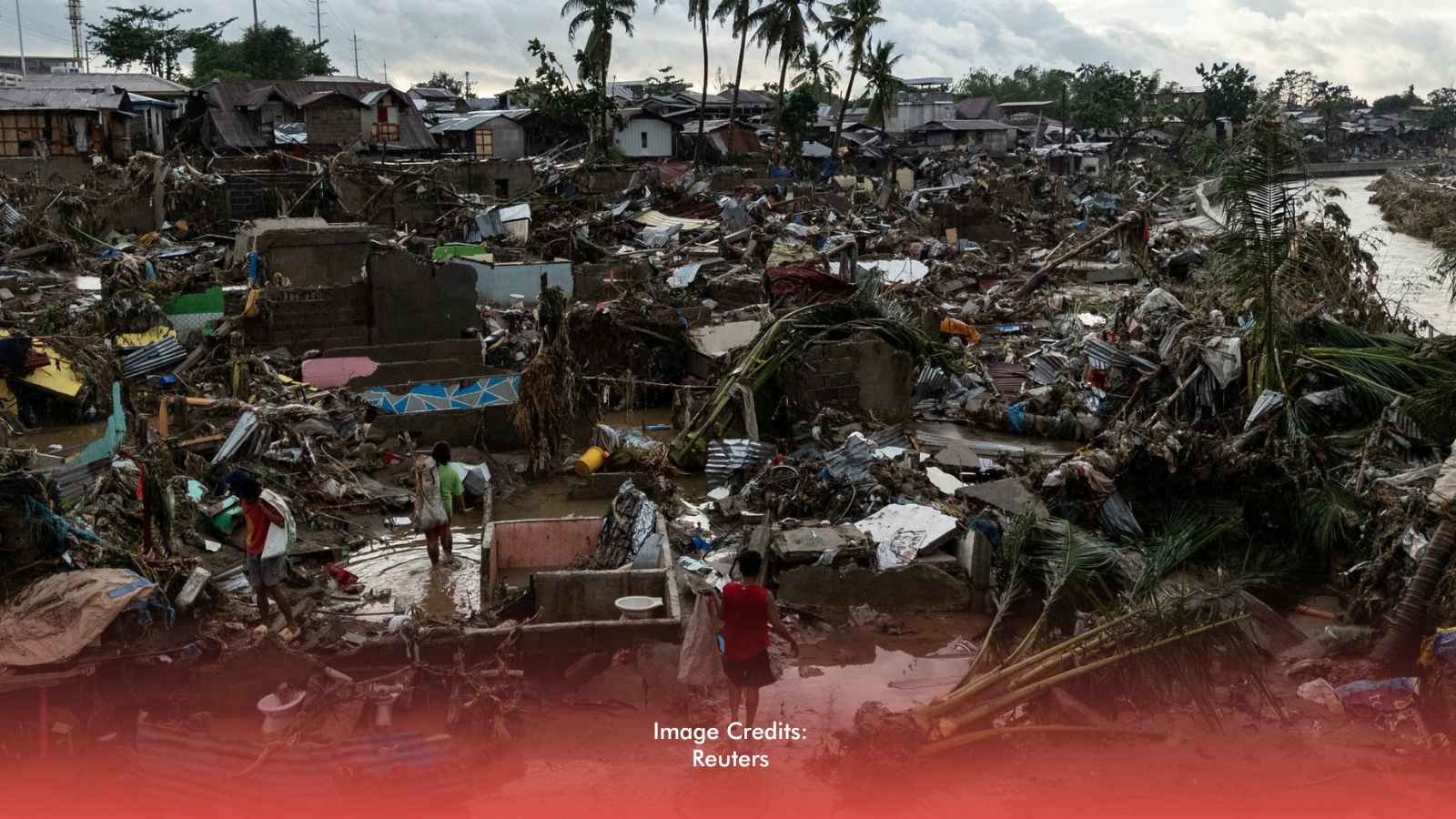Typhoon Tino (international name: Kalmaegi) left a trail of destruction across Visayas after making two landfalls early Tuesday, displacing thousands of residents and causing widespread flooding and power outages in several provinces.
The powerful cyclone made its first landfall at 12 a.m. in Silago, Leyte, followed by a second landfall in Borbon, Cebu, around 5:10 a.m., according to the Philippine Atmospheric, Geophysical and Astronomical Services Administration (PAGASA).
PAGASA said Tino packed maximum sustained winds of 150 kilometers per hour and gusts reaching 205 kph while moving west at 25 kph. The typhoon crossed the Negros Island Region on Tuesday evening before heading toward northern Palawan.
Heavy Damage and Displacement
The National Disaster Risk Reduction and Management Council (NDRRMC) has reported that nearly 203,595 families have been affected by Tino’s onslaught across the Visayas. Reports also say that as many as 89 deaths have been recorded.
“May natabunan po. May nahulugan po ng hard objects. At marami po ang nalunod,” Office of Civil Defense Region VII Director Joel Erestain said in an interview.
Several others remain missing or injured due to the onslaught of the storm, while dozens of evacuation centers have been opened to shelter displaced residents. Local governments are still assessing the full extent of the damage.
“Initial assessments show significant flooding and structural damage in coastal barangays,” the NDRRMC noted in its Wednesday morning bulletin.
In Cebu and Leyte, local disaster offices reported widespread power interruptions and impassable roads due to landslides and fallen debris. Five major transmission lines in the Visayas and Mindanao remain out of service due to Typhoon Tino (Kalmaegi), disrupting power in parts of Leyte, Southern Leyte, and Surigao provinces, the National Grid Corporation of the Philippines (NGCP) reported.
The agency said line crews have been deployed and simultaneous restoration efforts are underway in areas that are already accessible.
Relief and Recovery Underway
The Department of Social Welfare and Development (DSWD) has mobilized relief efforts, prepositioning food packs and emergency supplies across regional hubs. Meanwhile, local governments have started post-disaster assessments to identify priority areas for rehabilitation.
PAGASA continues to monitor Tino’s movement as it traverses the West Philippine Sea, warning that moderate to heavy rains may still persist over parts of Western Visayas and Palawan and it is expected that Tino will leave the Philippine area of responsibility by early Thursday.
Authorities urged residents to remain cautious amid possible flash floods and landslides in saturated areas.








